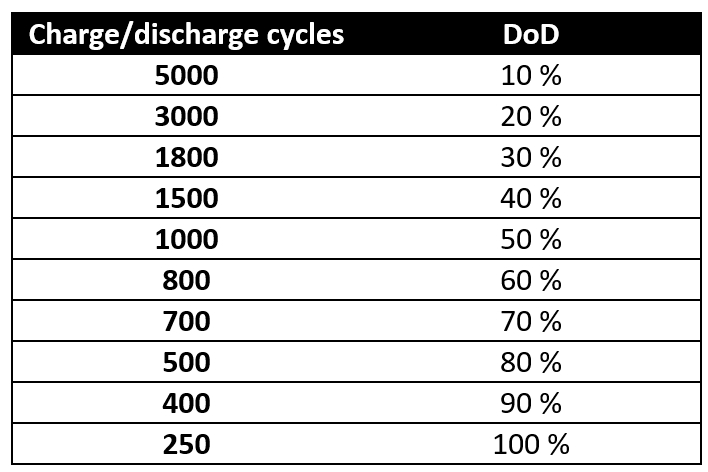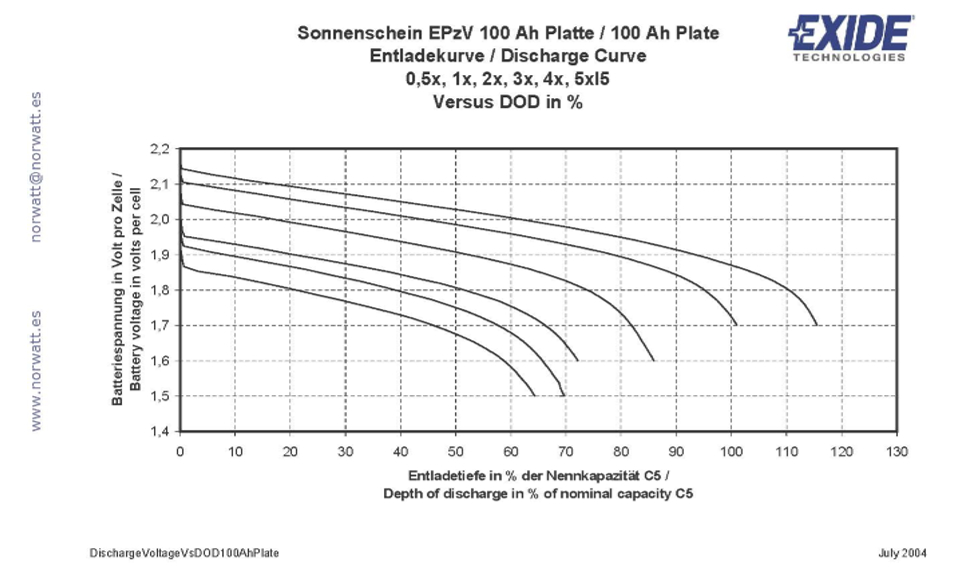We have found a really interesting article about batteries for campervan caravans at https://www.parkedinparadise.com/battery-basics/ over which I felt the need to deepen.
It mentions deep-cycle batteries for this application because they are lead-acid battery designed to be regularly deeply discharged. It means, they can be discharged to low voltage levels, without decreasing charge-discharge cycles. However, in order to guarantee a good camping experience, it is necessary to run some numbers.
Below we analyze expected life in these batteries depending on how they are discharged.
There are a multitude of different battery technologies available, and in all of them, the number of charge-discharge cycles is affected by the maximum and minimum voltages used during the cycle.
Depending on the battery used, the number of cycles will vary based on your depth of discharge.
As an example, for a flat plate battery:

Apart from regular maintenance recommendations, (check here: https://www.norwatt.es/archivos/faq/biblioteca_exide_manual_plomo_abiertas_batterias.pdf
https://www.norwatt.es/archivos/faq/biblioteca_baterias_estacionarias_de_plomo_acido_con_valvula_regulada.pdf), it is advisable to limit how deep you discharge the battery. The smaller the discharge (low DoD), the longer the battery will last.
On the other hand, the more deeply you discharge a battery, the more autonomy you get, but the voltage decreases and the equipment cannot work properly at such low voltages.
An example of how the voltage decreases depending on the capacity discharged would be:

A standard 12 Vdc nominal battery is composed by 6 cells and if they are discharged up to 1.7 Vdc/cell, final voltage will be 10.2 Vdc, and may reach the limit of the useful working voltage.
When sizing industrial equipment, design voltage is usually nominal voltage +10% -15% and, although these batteries can be cycled down to 20% charge, the best lifespan vs cost method is to keep the average cycle at about 50% discharge.
Furthermore, stationary or motive power batteries are designed to work with a wide voltage range and they deliver low cranking current. This lower "cranking current" implies that an oversized battery may be required.
IN SHORT:
Before choosing the right battery (technology and sizing), you have to check the application (start-up or cycle), the required design life (number of cycles), voltages (maximum and minimum), in addition to other factors such as charge and working temperature.
A deep-cycle battery allows longer discharges, but smaller cranking currents; the voltage decreases and the some devices in the caravan cannot work properly at such low voltages.